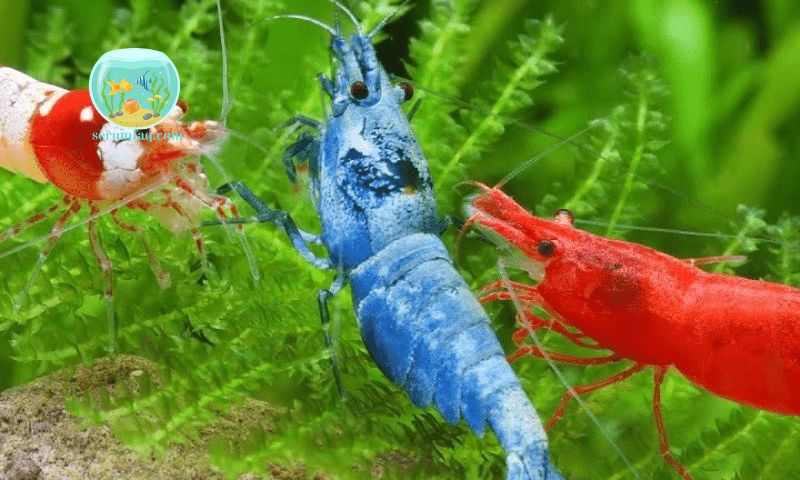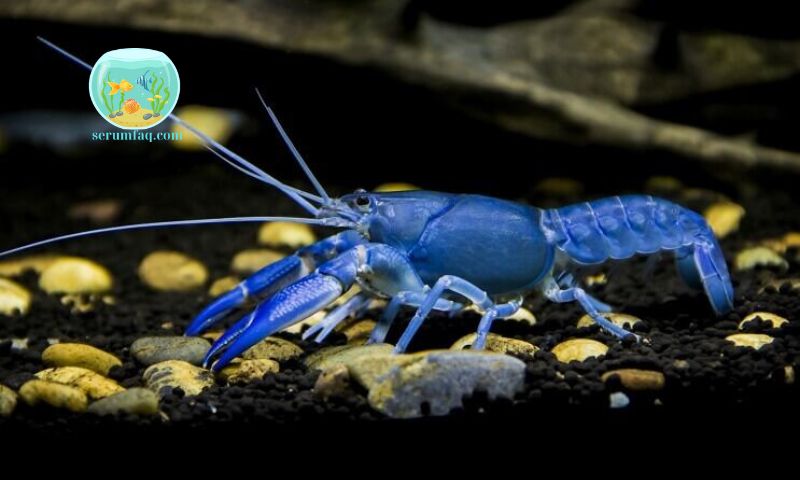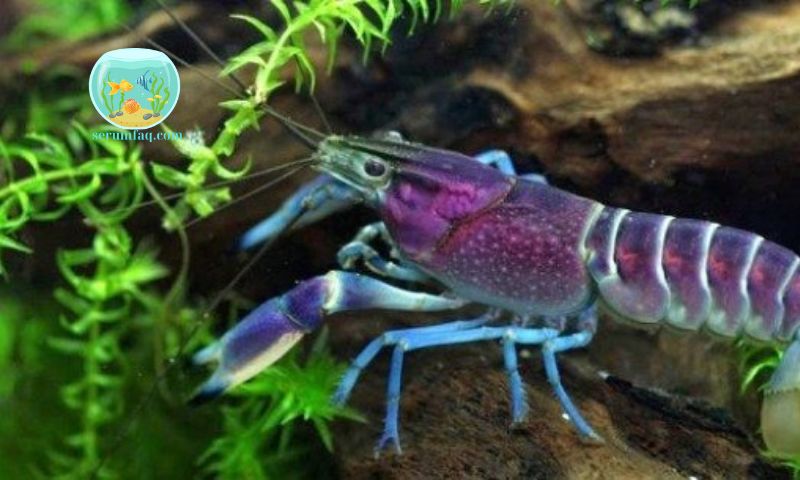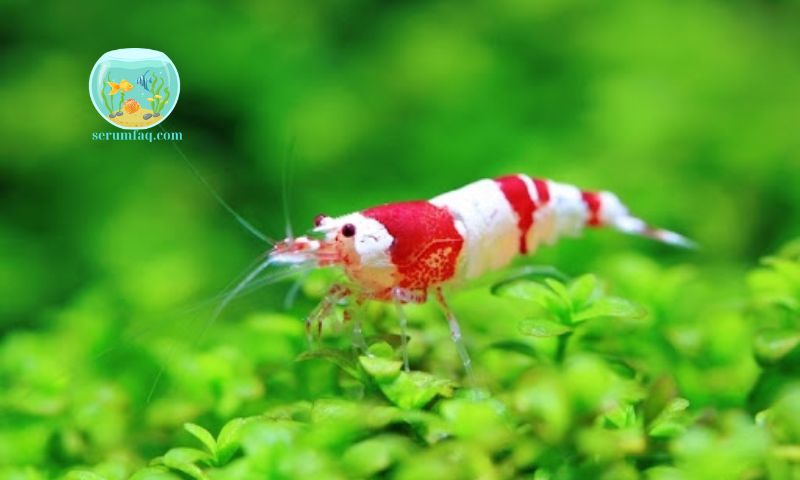What do ornamental shrimp eat? Ornamental shrimp have become increasingly popular in the world of aquariums, known for their vibrant colors and fascinating behaviors. These small, captivating creatures add a unique aesthetic appeal to any tank, but to keep them healthy and thriving, it’s crucial to understand their dietary needs. This article explores the question, “What do ornamental shrimp eat?” and provides detailed insights into their nutritional requirements, natural diet, commercial food options, feeding tips, and common dietary mistakes.
Types of Ornamental Shrimp

Ornamental shrimp can be categorized into two main types: freshwater and saltwater shrimp. Each type has distinct species with specific dietary preferences.
Freshwater Ornamental Shrimp
Popular species of freshwater ornamental shrimp include Cherry shrimp, Amano shrimp, and Crystal Red shrimp. Cherry shrimp are known for their bright red coloration, while Amano shrimp are celebrated for their algae-eating capabilities. Crystal Red shrimp, with their striking red and white patterns, are another favorite among aquarists.
Saltwater Ornamental Shrimp
In the realm of saltwater shrimp, species such as Cleaner shrimp and Harlequin shrimp are highly sought after. Cleaner shrimp, like the Skunk Cleaner shrimp, are renowned for their symbiotic relationship with fish, cleaning parasites off their bodies. Harlequin shrimp, on the other hand, are known for their unique appearance and preference for starfish as their primary food source.
Basic Dietary Requirements

Understanding what ornamental shrimp eat begins with knowing their basic dietary requirements. Ornamental shrimp need a balanced diet that includes protein, algae and plant matter, and essential minerals to support their growth, molting process, and overall health.
Protein
Protein is a crucial component of a shrimp’s diet. It supports growth, reproduction, and the development of new exoskeletons during molting. Shrimp obtain protein from various sources, including microorganisms, small invertebrates, and specially formulated shrimp food.
Algae and Plant Matter
Algae and plant matter form a significant part of a shrimp’s diet, especially for species like Amano shrimp, which are known for their algae-eating habits. Algae provide essential nutrients and fiber that aid in digestion and overall health.
Minerals
Minerals, particularly calcium, are vital for the development and maintenance of a shrimp’s exoskeleton. Without adequate minerals, shrimp can suffer from incomplete molts and weakened exoskeletons, making them susceptible to diseases and injuries.
Natural Diet
To understand what ornamental shrimp eat in their natural habitat, it’s essential to look at their natural diet.
Algae
In the wild, ornamental shrimp primarily consume algae. Algae grow naturally in aquatic environments and provide a readily available food source. Different species of algae offer various nutrients, making them a staple in a shrimp’s diet.
Biofilm
Biofilm, a thin layer of microorganisms that forms on surfaces in aquatic environments, is another primary food source for shrimp. It consists of bacteria, fungi, and detritus, providing a rich source of nutrients and protein.
Microorganisms
Microorganisms, including tiny invertebrates and protozoa, are also part of a shrimp’s diet. These small organisms are abundant in natural water bodies and offer essential nutrients that support shrimp health.
Plant Debris
Shrimp also consume decaying plant matter and detritus, which provide additional nutrients and fiber. This natural behavior helps maintain a clean and balanced ecosystem in their habitat.
Commercial Shrimp Food

For aquarists, providing a balanced diet for ornamental shrimp is made easier with commercial shrimp food options.
Pellets
Shrimp pellets are specifically formulated to meet the dietary needs of ornamental shrimp. They contain a mix of protein, algae, and essential minerals, ensuring a well-rounded diet.
Flakes
Fish flakes are another option, although they should be supplemented with other foods to meet a shrimp’s nutritional requirements. Flakes can be ground into smaller pieces to make them easier for shrimp to consume.
Specialized Shrimp Food
There are various specialized shrimp foods available on the market, designed to cater to the specific dietary needs of different shrimp species. These foods often include additional supplements to promote molting and overall health.
Homemade Food Options
In addition to commercial food, many shrimp keepers prefer to provide homemade food options to diversify their shrimp’s diet.
Vegetables
Vegetables like zucchini, spinach, and cucumber are excellent choices for shrimp. These should be blanched to soften them and make them easier for shrimp to eat. Vegetables provide essential nutrients and fiber.
Protein Sources
Blanched meat, such as chicken or fish, can be offered in small quantities as a protein supplement. Additionally, high-quality fish food can be used as a protein source.
Algae Wafers
Algae wafers are a popular homemade food option, providing a concentrated source of algae that shrimp can graze on over time.
Feeding Tips
Proper feeding practices are crucial to maintaining the health and well-being of ornamental shrimp.
How Often to Feed Ornamental Shrimp
Ornamental shrimp should be fed once or twice a day, depending on the population size and tank conditions. It’s essential to observe their behavior and adjust feeding frequency accordingly.
Avoiding Overfeeding
Overfeeding can lead to poor water quality and health issues. Signs of overfeeding include uneaten food and murky water. It’s important to remove any uneaten food to prevent it from decomposing and affecting water quality.
Special Dietary Considerations
Different stages of a shrimp’s life and specific conditions may require special dietary considerations.
Dietary Needs During Molting
During molting, shrimp require higher levels of protein and calcium to support the formation of a new exoskeleton. Providing protein-rich foods and calcium supplements can aid in this process.
Feeding Baby Shrimp
Baby shrimp, or larvae, have different dietary needs compared to adult shrimp. Infusoria, a type of microorganism, is an excellent food source for larvae. Additionally, finely crushed flakes can be offered to meet their nutritional requirements.
Common Dietary Mistakes
Avoiding common dietary mistakes is crucial to maintaining the health of ornamental shrimp.
Foods to Avoid
Certain foods can be toxic to shrimp or cause health issues. Processed human foods, such as bread or pasta, should be avoided. Additionally, foods containing harmful chemicals or preservatives should not be fed to shrimp.
Impact of Poor Diet on Shrimp Health
A poor diet can lead to various health problems, including disease, incomplete molts, and a reduced lifespan. Ensuring a balanced and nutritious diet is essential for keeping shrimp healthy and thriving.
Conclusion
In conclusion, understanding what ornamental shrimp eat is vital for maintaining their health and longevity. Providing a balanced diet that includes protein, algae, plant matter, and essential minerals is key to keeping ornamental shrimp healthy and vibrant. By following proper feeding practices and avoiding common dietary mistakes, aquarists can enjoy the beauty and benefits of these fascinating creatures in their aquariums.

